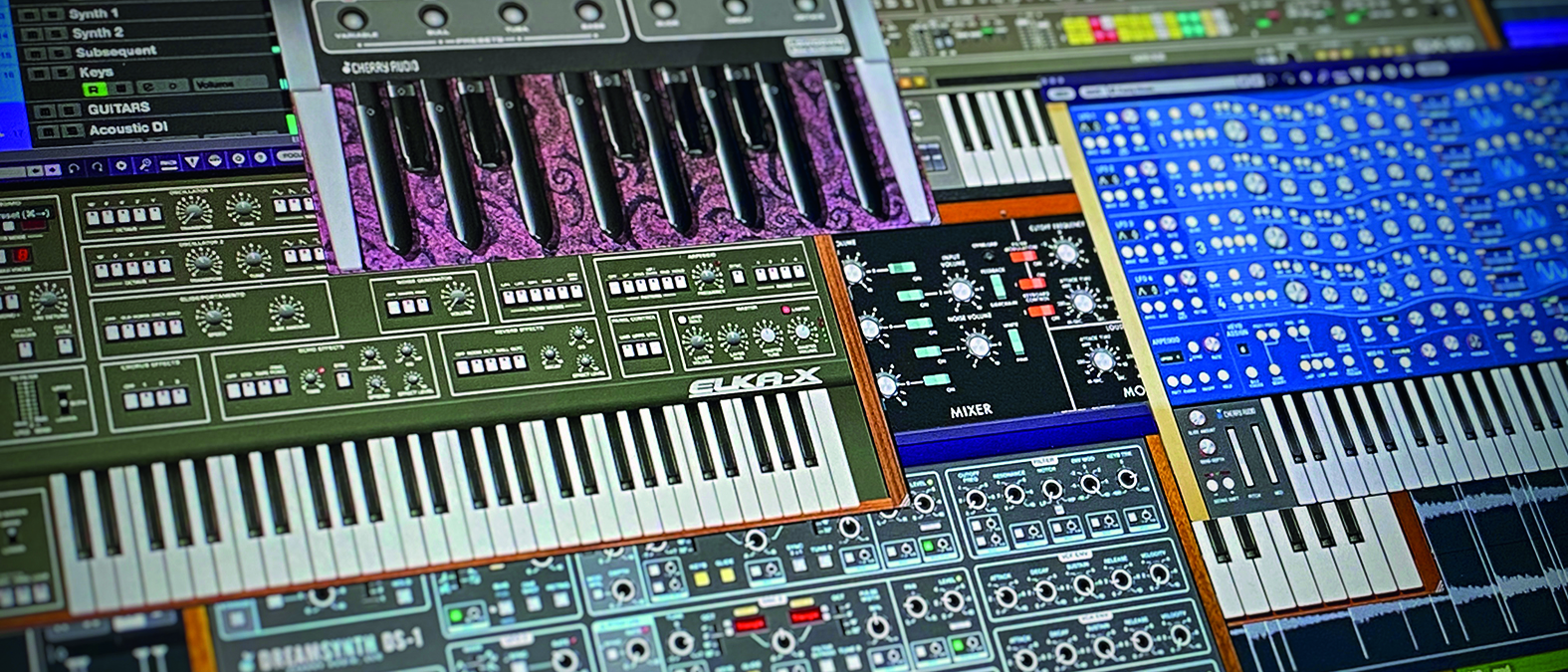MusicRadar Verdict
Synth Stack is an excellent value bundle of quality instruments, including a few standout highlights that are genuinely top-tier.
Pros
- +
Excellent value and consistently high quality.
- +
Sines and Dreamsynth are top-quality original instruments.
- +
Extensive, usable preset libraries.
Cons
- -
Some of the emulated instruments are fairly common.
- -
No unified download/install tool.
MusicRadar's got your back
Cherry Audio Synth Stack 3: What is it?
KEY FEATURES: 16 virtual instrument plugins, including 15 self-contained instruments and Voltage Modular Core + Electro Drums. Formats: PC/Mac, VST/AU/AAX.
Buy at Plugin Boutique
US developer Cherry Audio first made waves releasing Voltage Modular back in 2018, but its rate of output in recent years has been eye-watering. In 2022 alone, it released seven plugins – not including the new batches of modules added to Voltage – bringing its catalogue up to a total of 19 products in less than five years. As a result, the company’s Synth Stack bundle has rapidly grown from a mere bulk-buy deal to a comprehensive package that looks like a legitimate rival to Arturia’s V Collection or Roland Cloud.
This latest Stack launches with 16 instruments, adding six since version 2 was released in late 2021. These are, broadly speaking, inspired by vintage hardware instruments, although some of them play the emulation game straighter than others.
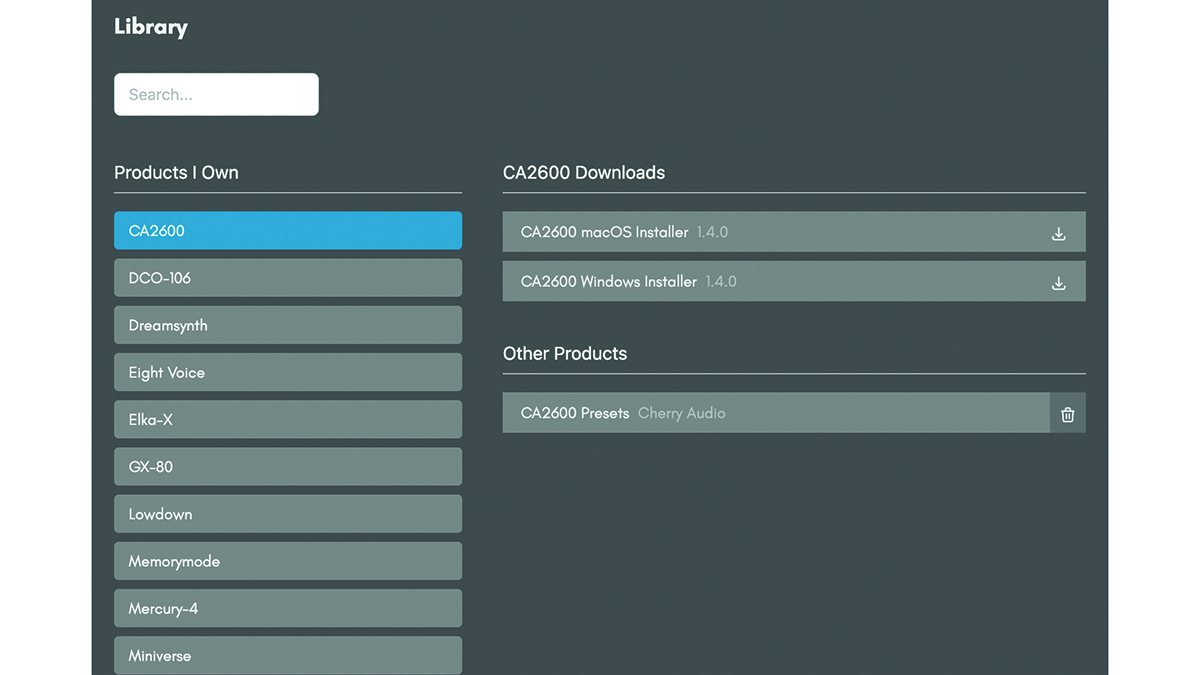
Download and install
By its own admission, one of the downsides to Cherry Audio’s catalogue expanding so rapidly is that the install process isn’t as slick as that offered by rivals like Arturia or Native Instruments. With no global download/activation tool in the style of Arturia’s Software Center, each plugin needs to be downloaded and activated individually. However, with a decent internet connection it’s not much of a hassle to download each individually, and a quick log in to your account when first opening a plugin is all that’s required to activate the whole stack.
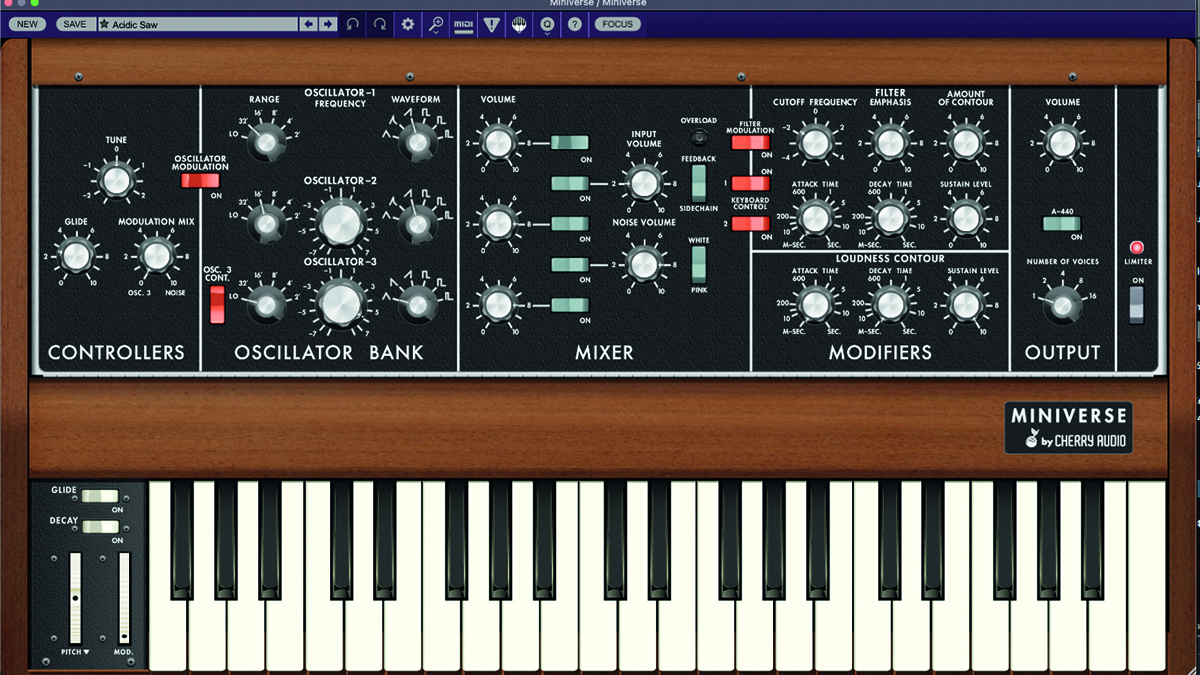
Cherry Audio Synth Stack 3: Performance and verdict
Let’s start at the more conventional end of things. First up is Miniverse, which is Cherry’s take on the Minimoog Model D. Most electronic musicians will be familiar with the Minimoog design these days, thanks both to its influential role in the history of synth development and its status as one of the most commonly emulated instruments in both hardware and software. Cherry’s take both looks and sounds bang on the money, capturing the authentic essence of the classic hardware while adding some handy – if not groundbreaking – extras, such as 16 voices of polyphony, a virtual feedback loop and master limiter.
As a standalone plugin one of Miniverse’s biggest selling points is its bargain price (at the time of writing it can be had for under $40), although that’s somewhat negligible when assessed as part of a bundle. As plugin emulations go, this is bread and butter stuff, but executed well. On the unlikely chance you don’t already have access to a Minimoog emulation, this is up there with the best of them. The generous and highly usable library of presets is nothing to scoff at either.
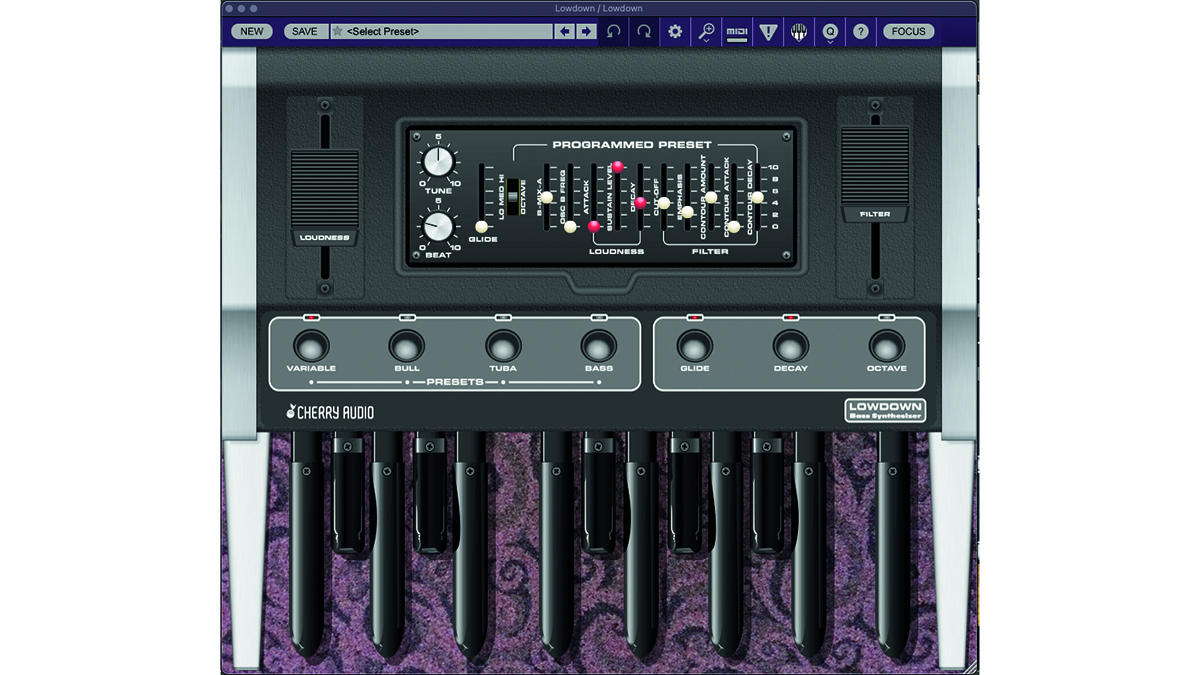
Similarly conventional albeit a little less common is Lowdown, which emulates Moog’s pedal-controlled Taurus bass synth. The Taurus was a favourite of classic prog acts, but its ability to conjure meaty detuned and filtered bass sounds makes it an excellent tool for electronic music too. It’s particularly good for subs that find that perfect balance between low-end weight and mid-range presence. As with its other emulations, Cherry Audio’s UI recreates the original hardware layout, which makes sense on one level, but does result in the odd situation of using a mouse to adjust a control layout largely designed to be operated with the feet.
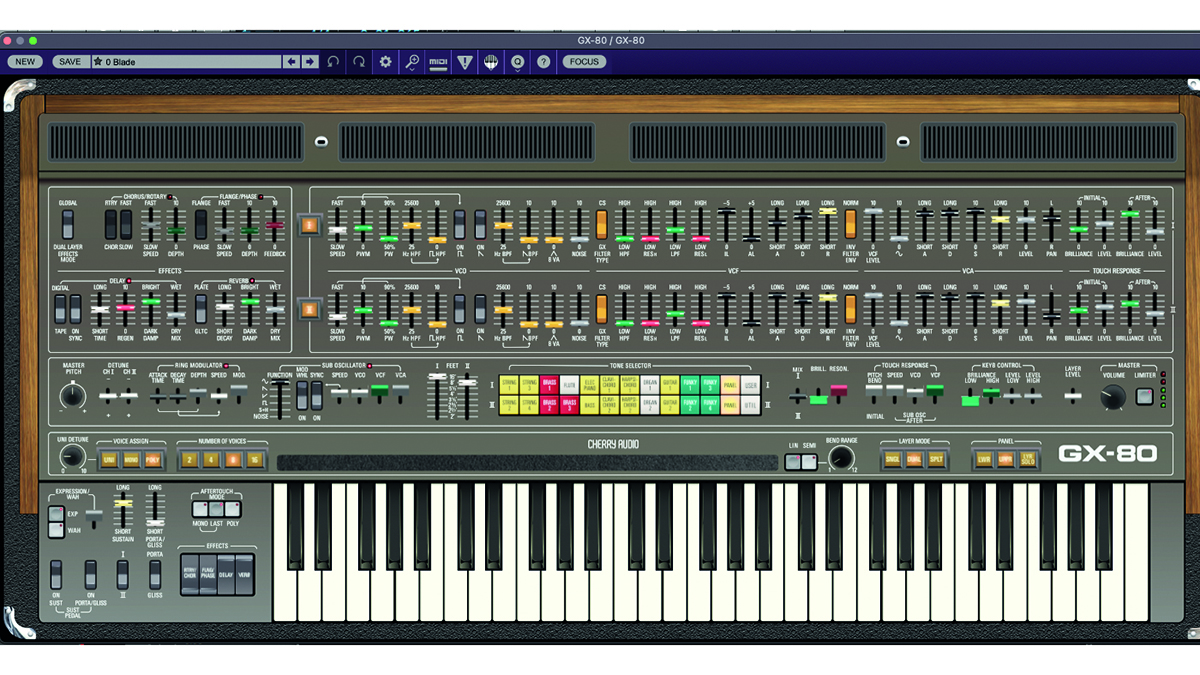
GX-80, Cherry’s most recent release, is another faithful emulation, albeit one that pushes the envelope out a little. The inspiration here is Yamaha’s iconic CS-80, another heavyweight of synth history (both figuratively and literally) commonly associated with Vangelis and his beloved soundtrack to Blade Runner. Cherry Audio’s take is frankly stunning – in both looks and sound it oozes vintage cool.
Where the GX-80 moves beyond rival emulations, however, is in its incorporation of elements modelled on Yamaha’s rare GX-1, which was similar in design to the CS-80 but had variations in filter and oscillator functionality. Cherry Audio’s plugin also has a dual layer design, allowing users to layer or split full polyphonic synth sounds. There are also four effects integrated – phase/flange, chorus/rotary, delay and reverb, which are limited in their customisation options, but sound fantastic.
Once again, the range of presets is a highlight here. There are 1,000 sounds that show off what the GX-80 is capable of while also presenting plenty of usable and inspiring sounds. It all adds up to one of the finest vintage emulations we’ve tried.
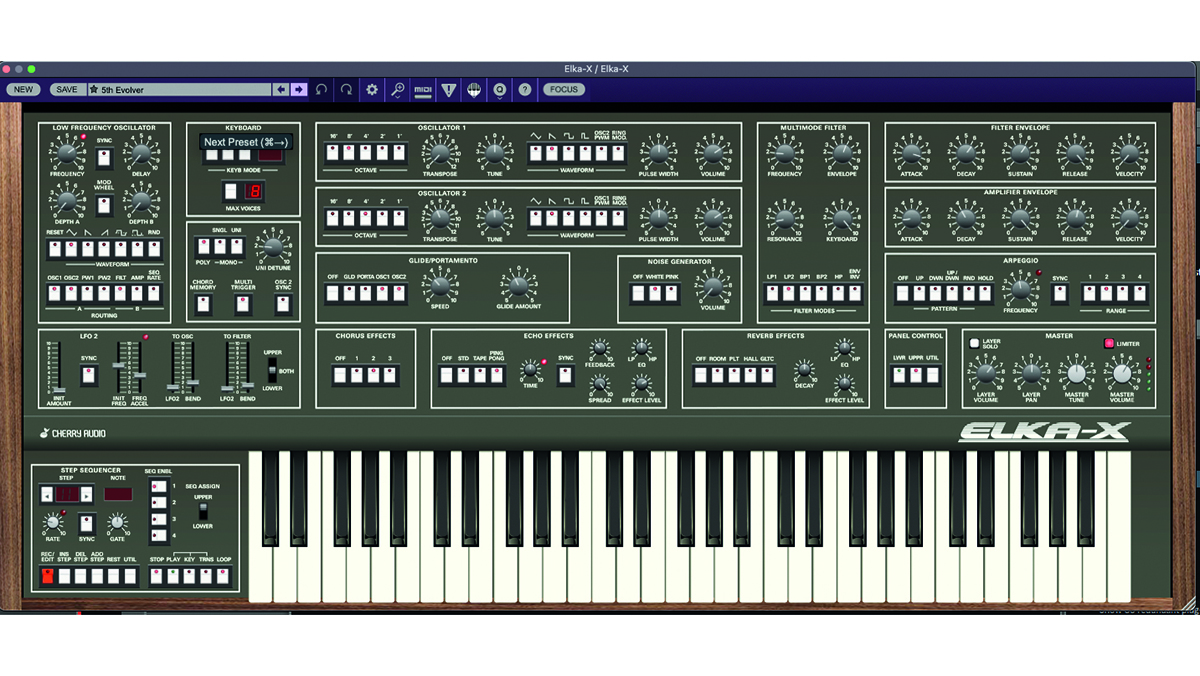
Next, the Elka-X emulates the Synthex, an often overlooked and less frequently emulated ’80s poly from Italian brand Elka. The original was a rich eight-voice analogue synth that sat neatly between the realms of late-’70s and mid-’80s synth design, capable of thick pads, cutting leads and timbrally complex drones. Cherry Audio’s take captures this faithfully, but also doubles the voice count to 16, adding in layer and split functions for good measure. The plugin design also refines the onboard sequencer, making it easier to sync and edit but without losing the simplistic hardware charm.
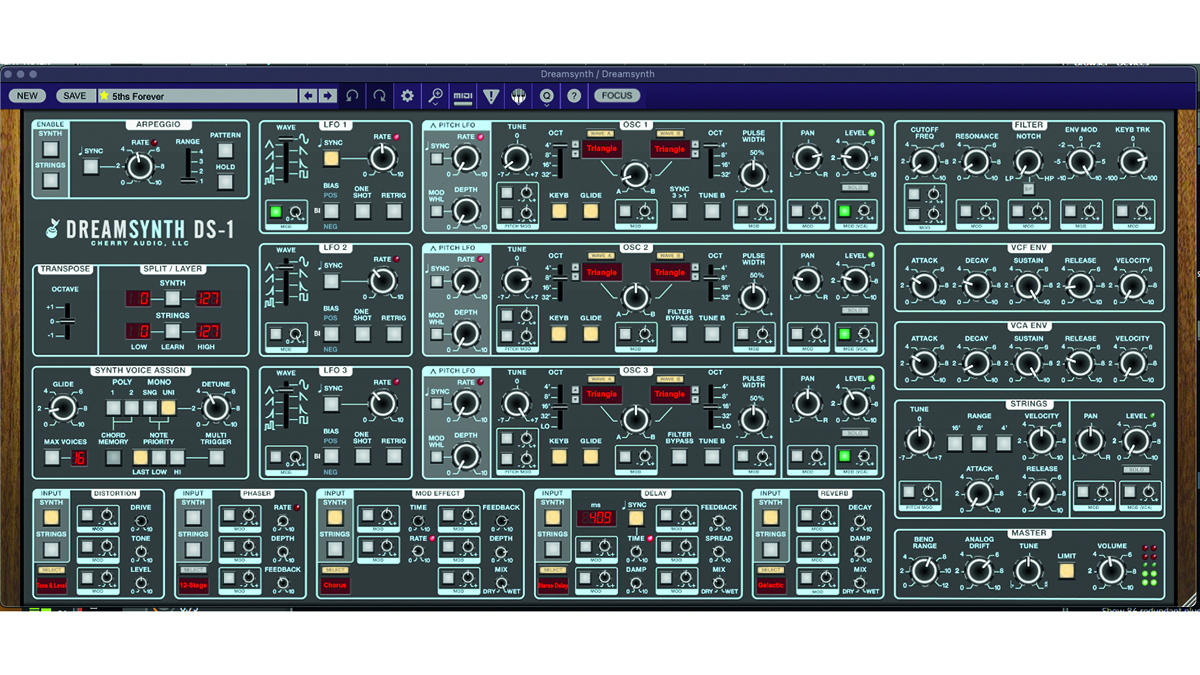
Cherry on the cake
Of Cherry Audio’s recent synths, however, the two highlights are those that step away from the realm of straightforward emulation. The first of these is Dreamsynth, which exists in an intentionally uncanny valley by virtue of looking vaguely like some forgotten synth from the 1980s whilst cutting its own, original path.
Dreamsynth takes inspiration from the first wave of hybrid digital/analogue synths, including the likes of Ensoniq’s ESQ-1, Kawai’s “K” series synths and the Sequential Prophet VS. Elements of each of these come together here to inform a three-oscillator design that simultaneously draws on virtual analogue waves and PCM samples – allowing two wave types to be combined within each oscillator. There’s also an additional string machine layer, which captures the wonderfully unconvincing synthesised string sounds of the era.
The retro influences carry through to the Oberheim-style 12dB filter and a bank of nicely retro effects, which can be routed to the synth oscillators and string machine separately. There are modern touches too though, including an impressive array of modulation options and compatibility with both aftertouch and MPE.
We really like Dreamsynth; it’s joyfully retro without being entirely beholden to any one instrument, and as such makes a great option for inspiring vintage-styled synth patches that have their own unique character.
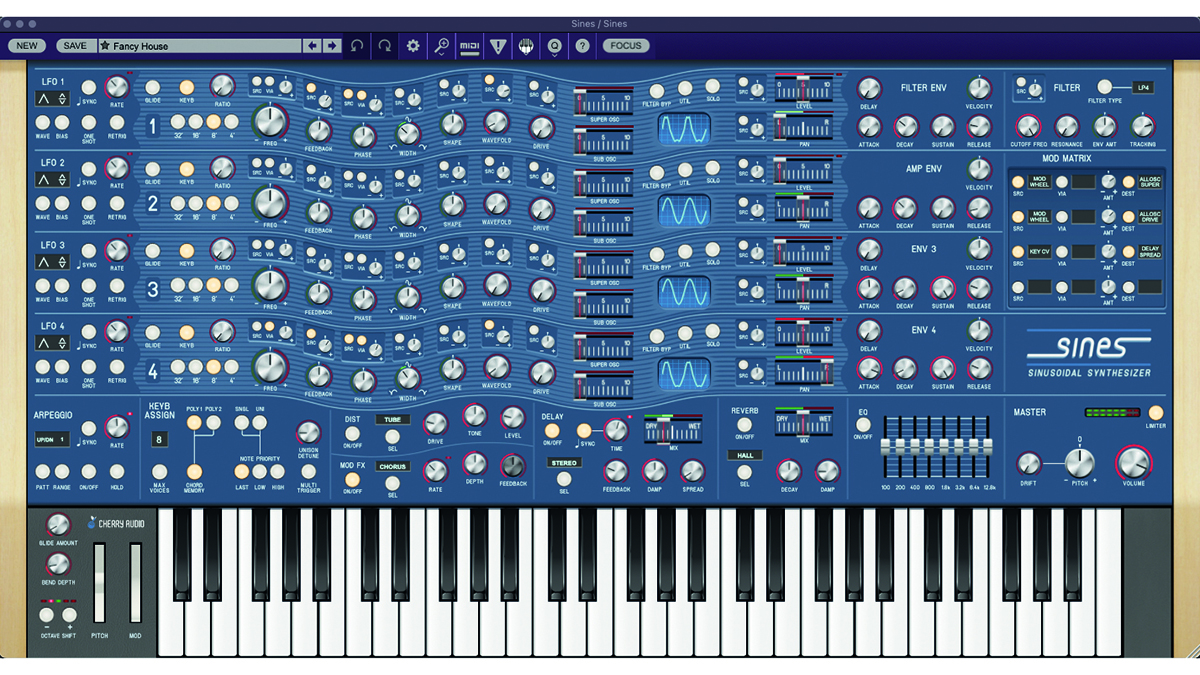
Equally if not more interesting is Sines, another original polysynth. The core of the instrument’s sound engine is focused around four sine wave oscillators. While this might sound like a rather basic premise, each of these oscillators comes equipped with a variety of controls designed to shift, reshape and combine these simple waves in order to create rich and complex tones.
Sines is both genuinely unique and sonically gorgeous – a must-try
Each oscillator has controls to adjust feedback, phase, width, shape, wavefolding, and drive, along with sub and super oscillators that introduce further sine waves an octave below and above respectively. Each oscillator also gets its own LFO, plus level and pan controls. The four oscillators can modulate one another too. As a result, Sines has a sonic remit that combines elements of subtractive, additive and DX-7-style FM synthesis. A filter section and an assortment of effects similar to those found on Dreamsynth and GX-80 finish things off. Taken as a complete picture, it’s both genuinely unique and sonically gorgeous – a must-try.
Fully stacked
What of the older inclusions in Synth Stack? These include several plugins we’ve previously reviewed and rated highly. That category includes Eight Voice, Cherry’s emulation of the rare Oberheim instrument, which adds the ability to link the original’s unwieldy stack of analogue synth voices.
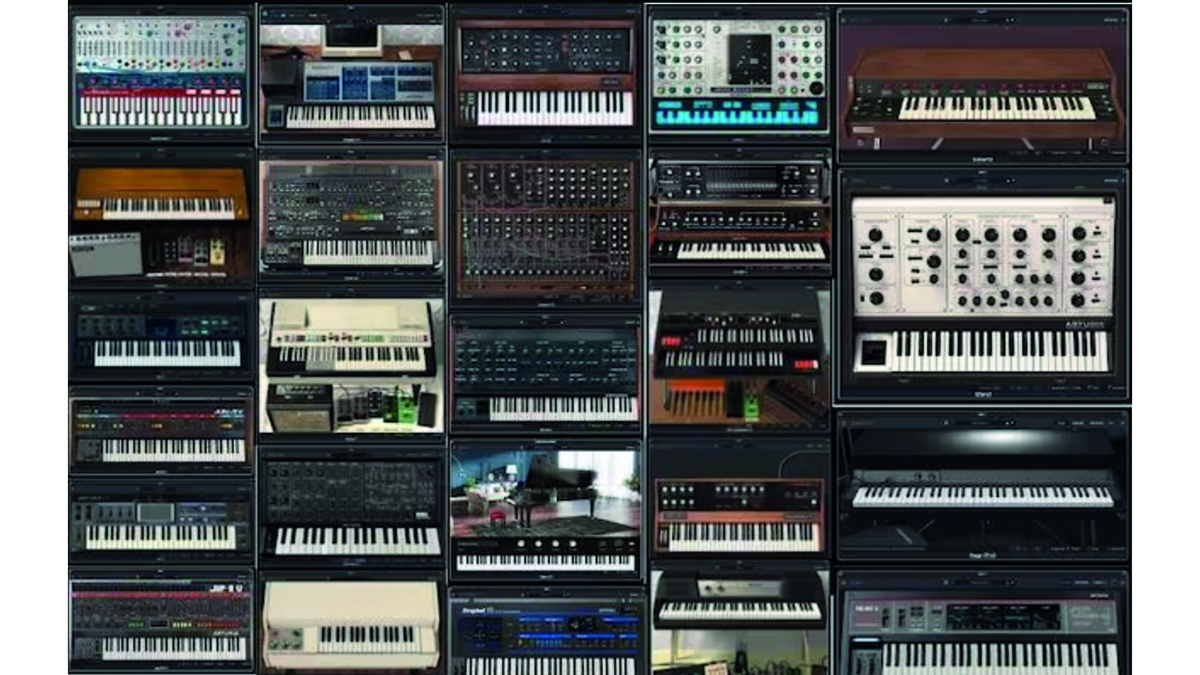
• Arturia V Collection 9
Arturia’s emulation is bigger and more established, but pricier to boot. There’s nothing quite as original as Sines or Dreamsynth.
• Roland Cloud
Roland’s subscription service is limited to the brand’s own catalogue, but that does bring access to many of dance music’s foundational tools.
• Native Instruments Komplete Standard
NI’s bundle includes sampled instruments and effects as well as synths. Like Synth Stack, it bundles a modular environment in the form of Reaktor Blocks.
There are also impressive emulations of Korg’s MS-20 (PS-20), Moog’s Polymoog (Polymode) and MG-1 (Surrealistic MG-1 Plus), the ARP 2600 (CA2600) and Quadra, as well as Roland’s Juno-106 (DCO-106) and Jupiter-4 (Mercury-4). The quality is consistently high across these virtual instruments, even if some of the early additions lack a few of the bells and whistles found on the more recent entries (or their equivalent rivals from other brands).
On top of this, Synth Stack also bundles Voltage Modular with its core collection of modules and Electro Drums expansion. This totals 120 module options to be patched and played through the flexible and slick virtual Eurorack environment. It also offers 600 preset patches, ranging from interesting sequenced patches to basses and lead through to hard-hitting modular drums.
The total list of content within Synth Stack isn’t quite as extensive as some of the bundle’s rivals, such as Arturia’s V Collection or Roland’s Cloud subscription – and there’s a fair amount of crossover with both – but it is a broad, well-balanced selection of instruments. There are a few obvious places where comparable bundles offer things you don’t get here; Roland Cloud boasts classic drum machine recreations, NI’s Komplete features effect processors and samples, V Collection offers pianos, organs and some more unusual emulations of vintage digital gear.
It’s worth noting though, that at $299 Synth Stack undercuts many comparable bundles whilst, for synthesists at least, ticking a broad range of boxes. Everything here is of a high quality too, from impressive if conventional emulations to genuinely top-tier virtual instruments. Given Cherry Audio’s relative infancy as a brand, it’s hugely impressive.
MusicRadar verdict: Synth Stack is an excellent value bundle of quality instruments, including a few standout highlights that are genuinely top-tier.
Cherry Audio Synth Stack 3: The web says
"Cherry Audio price their instruments quite aggressively, and so in some ways, it’s easier just to pick up the one or two that really appeal to you. But there’s no doubt that Synth Stack 3 is a decent deal for a bundle of often quirky, unusual and great-sounding synths."
Gearnews
Cherry Audio Synth Stack 3: Hands-on demos
Cherry Audio
MusicGearz
Cherry Audio Synth Stack 3: Specifications
- KEY FEATURES: 16 virtual instrument plugins, including 15 self-contained instruments and Voltage Modular Core + Electro Drums. Formats: PC/Mac, VST/AU/AAX.
- CONTACT: Cherry Audio
I'm the Managing Editor of Music Technology at MusicRadar and former Editor-in-Chief of Future Music, Computer Music and Electronic Musician. I've been messing around with music tech in various forms for over two decades. I've also spent the last 10 years forgetting how to play guitar. Find me in the chillout room at raves complaining that it's past my bedtime.
“A synthesizer that is both easy to use and fun to play whilst maintaining a decent degree of programming depth and flexibility”: PWM Mantis review
“I feel like that song had everything we needed to come back with”: Bring Me The Horizon’s Lee Malia on Shadow Moses, its riff and the secrets behind its tone, and why it was the right anthem at the right time
“I said, ‘Are we sure we can write a song about death?’”: The story of Mike + The Mechanics' classic No.1 The Living Years
